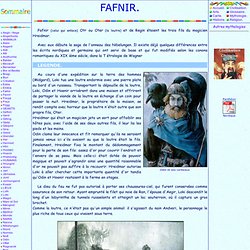

3bbd5cbd.jpg (Image JPEG, 600x600 pixels) Twitter. Sea Otter Photos - Michael Yang Photography. Loutrons1.jpg (Image JPEG, 800x533 pixels) 009515-450-southern-sea-otter.jpg (Image JPEG, 450x300 pixels) Untitled. Petit dictionnaire de zoologie mythique.

Otter Stories - Story-Lovers SOS Story Lists. Bwitologie : la loutre. Le propriétaire de ce blog étant actuellement sujet à des hallucinations le faisant voir Timothy Leary partout, le professeur Graznok a bien voulu retarder une expédition en Palombie le temps qu’il se repose.

Spécialiste émérite en bwitologie, il en profite aujourd’hui pour nous entretenir d’une bêêête ô combien incontournable : la loutre. Celle-ci est en effet considérée par tous les spécialistes comme l’animal le plus cool de la Création. Après vous avoir présenté brièvement cette bêêête, ses us et coutumes ainsi que sa symbolique, le professeur Graznok vous expliquera comment la loutre surclasse ses rivaux. Alors suivons ses traces ! « On est enfin dans la rubrique bwitologie ! Mammifère carnivore, la loutre part avec une longueur d’avance sur sa classe. Même si elle peut se déplacer sur terre, la loutre fascine par son aisance dans l’eau . Treize espèces sont répertoriées dans le genre lutrinae.
Otters in Culture. The stories surrounding the Otter go back to the early times of mythology.

There you will find the story about a dwarf that took on the form of an Otter. There is also the myth of Otters Ransom that is an excellent story to read. It is the beginning of a saga so be prepared to enjoy some wonderful reading. There are a couple of cultures out there that really honor the Otter. For example many types of Native Americans feature the Otter on their totem poles. The Europeans believed that the Otter is really a type of god in disguise. Native American Indian Otter Legends, Meaning and Symbolism from the Myths of Many Tribes. Indigenous languages Native American cultures Native American art shows Otter features as a light-hearted trickster character in the folklore of some tribes, particularly in children's stories.

Seneca Indian Myths: The Friendship of an Otter. Sacred Texts Native American Iroquois Index Previous Next p. 434 ONCE, in the fall of the year, a chief and six or eight families went on a hunting expedition.

For many days they found no game. At last the chief, who had as a charm a fawn skin pouch, called the party to his brush house and told each person to take hold of the pouch and say what animal he would kill the next day. The first man said he would kill a bear. At midnight he got up and went to where the river doubled nearly around and there he watched for otters. That day each person came home without game. The chief examined the two otters and when he saw that the hearts had been taken out, he was very angry. The young man's wife was frightened. The chief said, "My son-in-law has broken the charm, we had better kill him. " Trees for Life: Mythology and Folklore of the otter. Sleek, lithe and playful, at home on land and in the water, the otter is a well-loved member of the Caledonian Forest fauna.

A Scottish name for the otter is the 'dratsie', and in Scottish tradition there are tales of 'Otter Kings' who were accompanied by seven black otters. When captured, these beasts would grant any wish in exchange for their freedom. But their skins were also prized for their ability to render a warrior invincible, and were thought to provide protection against drowning. Luckily, the Otter Kings were hard to kill, their only vulnerable point being a small point below their chin. Otters sometimes swim single file as a family group, and it has been suggested that this might account for some of the Loch Ness Monster sightings! The otter features in an ancient shamanic Welsh tale. In Celtic and other folklore the otter is often characterised as a friendly and helpful creature, and is given the name 'water dog', alluding to these qualities.
Dan Puplett. Otter. Etymology[edit] The word otter derives from the Old English word otor or oter.

This, and cognate words in other Indo-European languages, ultimately stem from the Proto-Indo-European language root *wódr̥, which also gave rise to the English word "water".[1][2] Terminology[edit] An otter's den is called a holt or couch. Male otters are called dogs, females are called bitches, and their offspring are called pups.[3] The collective nouns for otters are bevy, family, lodge, romp (being descriptive of their often playful nature) or, when in water, raft. The feces of otters are typically identified by their distinct aroma, the smell of which has been described as ranging from freshly mown hay to putrefied fish;[4] these are known as spraint.[5] Life cycle[edit] The gestation period in otters is about 60 to 86 days.
Characteristics[edit] Otters have long, slim bodies and relatively short limbs with webbed paws. For most otters, fish is the staple of their diet. LA LEGENDE DE L'HOMME LOUTRE - Terranoa. AN OTTER - Billy Ramsell. Litterature_irlandaise_poesie_irlandaise_fr.
Selkies. Mythologie nordique et germanique: Fafnir. Fafnir (celui qui enlace) Otr ou Oter (la loutre) et de Regin étaient les trois fils du magicien Hreidmar.

Avec eux débute la saga de l'anneau des Nibelungen. Il existe déjà quelques différences entre les écrits nordiques et germains qui ont servi de base et qui fut modifiés selon les canons romantiques du XIX ième siècle, dans la T étralogie de Wagner. Loutre.